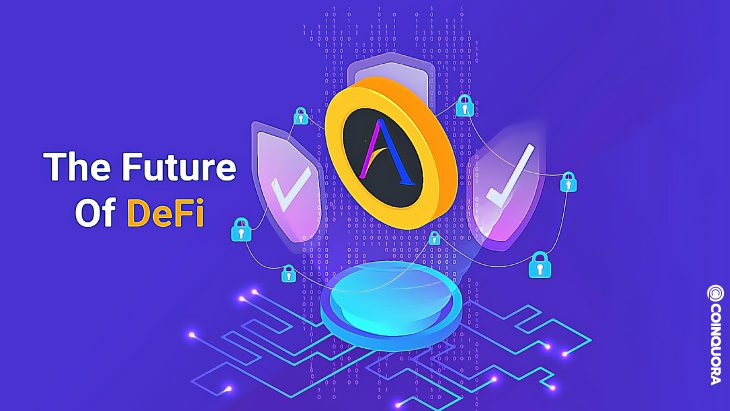- The brighter future of decentralized finance (DeFi) is here.
- DeFi has been one of the stunning technology changing the crypto industry from grass to grace.
- Its TVL has exceeded $291.75 billion.
Decentralized finance (DeFi) has been one of the most significant and successful waves of blockchain innovation.
The technology which was created to reproduce old financial institutions with fewer intermediaries has transitioned to being utilized in lending, borrowing, and generating passive income. This age of DeFi decentralized apps (DApps) started with Ethereum, which had a great network activity in summer 2020. It has accomplished huge milestones since its launch
According to DeFiLlama, the current total value locked (TVL) in DeFi exceeds $291.75 billion. DeFi protocols are constantly growing and iterating on established financial-based agreement models, fuelled by their intrinsic advantages of permissionless composability and open-source development culture.
The industry is expanding at a breakneck pace, and platforms like Aggregated Finance are powering the new era of DeFi. With its aggregated farming trading strategy, the platform aims to revolutionize decentralized finance investment decisions.
The Rise of DeFi 2.0
DeFi 2.0 has already taken the industry by storm. This upgraded version of the current DeFi concept has addressed the key existing weaknesses while capitalizing on strengths to present users with new and exciting alternatives on the path to financial independence.
Unlike the previous version of dApps, which were oriented toward users, DeFi 2.0 is more geared towards a B2B approach.
DeFi 2.0 protocols make use of the fact that the first generation of dApps successfully bootstrapped the industry by building an initial user base and providing critical DeFi primitives that future manufacturers can now utilize to build the next wave of dApps. And the goal of this is to ensure the long-term survival of the sector.
Even Aggregated Finance has been at the forefront of innovation in resolving key issues with the existing DeFi ecosystem. With features such as advanced governance mechanisms, delegated trading, and CG & CMC Listings, the platform has not only driven the DeFi 2.0 world but also set the way for the DeFi 3.0 revolution.
The platform is pioneering a new DeFi based investment model with DAO-controlled voting, delegated trading, and passive income for holders.
DeFi 3.0: An Innovation on its Way
DeFi 3.0 is coming with its focus on mass adoption infrastructure and DeFi-as-a-service technology. It is set to create a global infrastructure dedicated to the creation, teaching, and broad use of DeFi 3.0 solutions and DeFi/Farming-as-a-Service (FaaS) for all. It is going to be a business with enormous potential that requires a recognized quality mark in order to establish DeFi 3.0 and FaaS as a genuine, recognized industry inside the crypto ecosystem.
To make this a reality, there are platforms that are creating the foundation for DeFi 3.0. One of them is Aggregated Finance, a platform that aims to lead the world on to decentralized investment through a DeFi-as-a-service approach.
Through its DeFi 3.0 approach, the project is creating the groundwork for the success of the entire ecosystem. The project’s intention is to fully establish an ecosystem to disrupt traditional financial systems. With the help of smart contracts, the project wants to allow users to have absolute control over core functionality and trading in the DeFi realm.
In short, they are making strategic investments simpler by aggregating the rewards to the holders of their tokens via buybacks and reflections. Their end goal would be to give their token holder the ownership rights and control over all investment decisions related to the project.
The DeFi Evolution Continues
Whether you consider DeFi 2.0 or DeFi 3.0 to be a generational shift in decentralized banking or simply fancy terms, one thing is certain: it’s yet another proof of the DeFi space’s ongoing advancement.
More significantly, the projects that comprise these DeFi movements demonstrate that we have already gone through what is maybe the most essential step of that evolution: the bootstrapping phase.
With that out of the way, DeFi initiatives now have the tools they need to continue pushing the envelope of decentralized finance. In a broader sense, DeFi phase one has taught us a lot. This industry is evolving in terms of acceptance and technology, as well as the decentralized ethos that people are losing as they merge with the old world.


